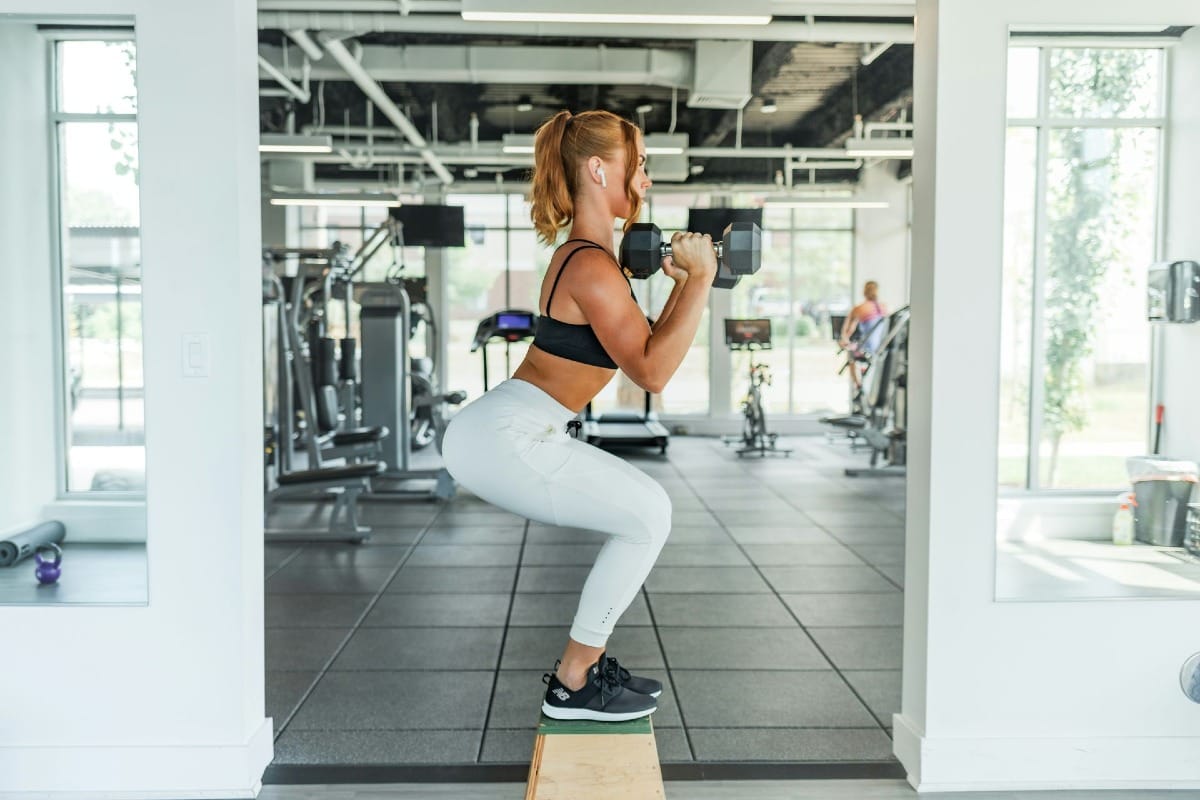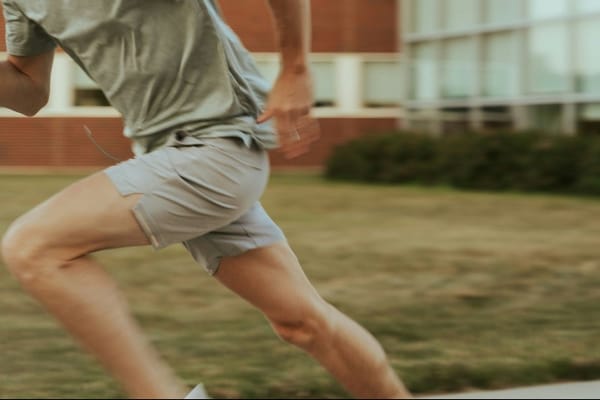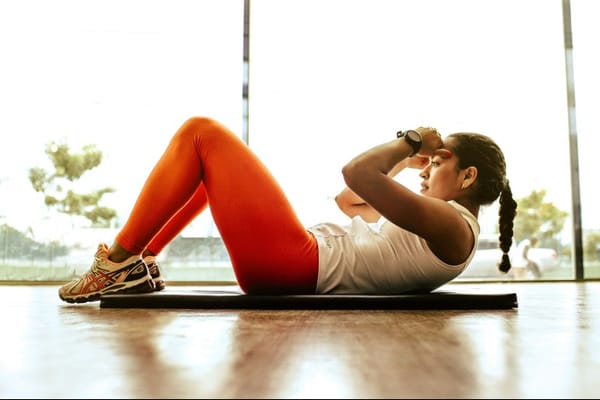When we think about exercise, we often focus on specific muscle groups or body parts we're targeting. However, there's one area that's constantly at work, even when we're not consciously engaging it: our core. This powerhouse of muscles plays a crucial role in nearly every movement we make, especially during physical activity. In this comprehensive guide, we'll explore three surprising ways your core is engaged during various exercises, shedding light on its importance and how you can maximize its potential for better overall fitness.
Understanding the Core: More Than Just Abs
Before diving into the ways your core works during exercise, it's essential to understand what we mean by "core." Many people mistakenly believe the core is simply the abdominal muscles, but it's much more complex than that.
The core's composition The core is a group of muscles that includes:
- Rectus abdominis (the "six-pack" muscles)
- Transverse abdominis (deep abdominal muscles)
- Internal and external obliques (side abdominal muscles)
- Erector spinae (back muscles along the spine)
- Multifidus (deep back muscles)
- Pelvic floor muscles
- Diaphragm
This intricate network of muscles works together to stabilize your spine, pelvis, and shoulder girdle, providing a solid foundation for all movements[1].
Core functions The core serves several vital functions:
- Stabilization: It helps maintain balance and posture during both static and dynamic movements.
- Force transfer: The core facilitates the transfer of force between the upper and lower body.
- Protection: It safeguards internal organs and supports the spine.
- Power generation: A strong core enhances power output in various athletic movements.
Understanding these functions helps us appreciate why the core is constantly engaged during exercise, even when we're not specifically targeting it.
1. The Core as Your Body's Natural Weight Belt
One of the most surprising ways your core works during exercise is by acting as a natural weight belt, providing stability and support for your entire body.
Intra-abdominal pressure When you engage in any exercise, especially those involving lifting weights or resistance, your body automatically increases intra-abdominal pressure. This pressure is created by the coordinated contraction of your core muscles, particularly the transverse abdominis[1].
Benefits of core engagement during lifting The core's engagement during lifting exercises offers several benefits:
- Spine protection: By creating intra-abdominal pressure, your core helps stabilize your spine, reducing the risk of injury.
- Improved power transfer: A stable core allows for more efficient transfer of force from your lower body to your upper body and vice versa.
- Enhanced balance: Core engagement helps maintain balance during complex movements or when lifting heavy weights.
Exercises that highlight core as a weight belt While the core acts as a weight belt in most exercises, it's particularly noticeable in:
- Squats
- Deadlifts
- Overhead presses
- Lunges
- Kettlebell swings
In these exercises, proper core engagement is crucial for maintaining form and preventing injury. For example, during a squat, your core muscles contract to maintain an upright posture and protect your spine as you lower and lift the weight[1].
2. The Core's Role in Rotational Movements
Another surprising way your core works during exercise is its involvement in rotational movements. Whether you're swinging a golf club, throwing a ball, or performing a Russian twist, your core is the key player in generating and controlling rotational force.
Anatomy of rotational core engagement During rotational movements, several core muscles come into play:
- Internal and external obliques: These muscles are primarily responsible for trunk rotation.
- Transverse abdominis: It provides stability during the rotation.
- Rectus abdominis: While not directly involved in rotation, it helps maintain tension throughout the movement.
Benefits of rotational core engagement Engaging your core during rotational movements offers several advantages:
- Improved athletic performance: Many sports require rotational power, which is directly linked to core strength.
- Enhanced functional fitness: Rotational movements mimic real-life activities, making everyday tasks easier.
- Reduced risk of injury: A strong, engaged core during rotation helps protect the spine and surrounding muscles.
Exercises that highlight rotational core engagement Some exercises that particularly emphasize the core's role in rotation include:
- Medicine ball rotational throws
- Cable woodchoppers
- Russian twists
- Pallof presses
- Bicycle crunches
These exercises not only strengthen your core but also improve your body's ability to generate and control rotational force, which is crucial for many sports and daily activities[1].
3. The Core's Involvement in Cardiovascular Exercises
Perhaps the most surprising way your core works during exercise is its constant engagement during cardiovascular activities. Even when you're running, cycling, or swimming, your core is hard at work, providing stability and efficiency to your movements.
Core engagement in cardio During cardiovascular exercises, your core serves several important functions:
- Posture maintenance: It helps maintain proper posture, which is crucial for efficient movement and injury prevention.
- Breathing support: The core muscles, particularly the diaphragm, play a vital role in breathing, which becomes increasingly important during cardio.
- Force transfer: Even in repetitive movements like running, the core helps transfer force between the upper and lower body.
Benefits of core engagement during cardio Engaging your core during cardiovascular exercises offers numerous benefits:
- Improved efficiency: A strong, engaged core allows for more efficient movement, potentially improving your endurance and performance.
- Reduced risk of injury: Proper core engagement helps maintain alignment, reducing stress on joints and muscles.
- Enhanced breathing: A strong core supports better breathing mechanics, which is crucial for cardiovascular performance.
Cardiovascular exercises that highlight core engagement While all cardio exercises involve the core to some extent, some particularly emphasize core engagement:
- Running: The core stabilizes the body with each stride and helps maintain proper posture.
- Swimming: Core muscles are crucial for maintaining body position in the water and generating power in strokes.
- Rowing: The core is heavily involved in the transfer of power between the legs and arms during the rowing motion.
- High-intensity interval training (HIIT): Many HIIT exercises, such as burpees or mountain climbers, require significant core engagement[1].
Maximizing Core Engagement in Your Workouts
Now that we understand how the core is constantly at work during various exercises, it's important to learn how to maximize its engagement for better overall fitness.
Mindful engagement One of the most effective ways to enhance core activation is through mindful engagement. This involves consciously focusing on your core muscles during exercises, even those that don't primarily target the core. Here are some tips:
- Breathe properly: Practice diaphragmatic breathing to engage your deep core muscles.
- Maintain neutral spine: Learn to maintain a neutral spine position during exercises to ensure proper core engagement.
- Visualize: Imagine your core muscles tightening and supporting your movements during exercise.
Incorporate core-specific exercises While the core is engaged in most exercises, including specific core-strengthening exercises in your routine can help improve overall core function. Some effective exercises include:
- Planks and their variations
- Dead bugs
- Bird dogs
- Hollow body holds
- Anti-rotation exercises like Pallof presses
Functional movement patterns Incorporating functional movement patterns that mimic real-life activities can help improve core engagement and overall fitness. These include:
- Squatting
- Lunging
- Pushing and pulling
- Rotating
- Carrying
By focusing on these movement patterns, you'll naturally engage your core in ways that translate to improved performance in daily activities and sports.
Conclusion: Harnessing the Power of Your Core
Understanding the surprising ways your core is at work during every single exercise can revolutionize your approach to fitness. By recognizing its role as a natural weight belt, its involvement in rotational movements, and its constant engagement during cardiovascular exercises, you can start to harness the full power of your core.
Remember, a strong core is not just about achieving visible abs; it's about improving overall functional fitness, enhancing athletic performance, and reducing the risk of injury. By mindfully engaging your core during all exercises, incorporating core-specific movements, and focusing on functional movement patterns, you can develop a stronger, more resilient body.
As you continue your fitness journey, pay attention to how your core feels during different exercises. You might be surprised to discover just how much work it's doing, even when you're not consciously focusing on it. By nurturing this powerhouse of muscles, you'll be well on your way to achieving your fitness goals and improving your overall quality of life.
Citations:
[1] Core Activation During Every Exercise: How to Do It and Benefits | Well+Good (wellandgood.com)













Member discussion